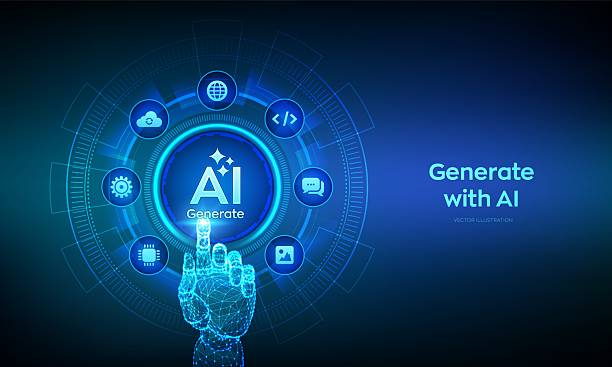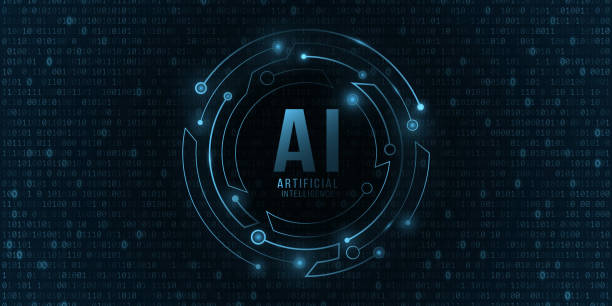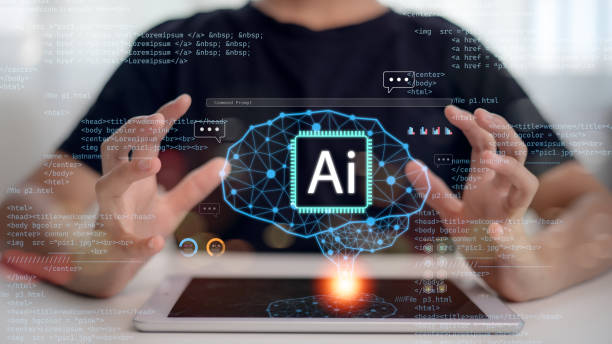What is Artificial Intelligence and How Does It Work?

What is Artificial Intelligence and How Does It Work?
#ArtificialIntelligence (AI) is a branch of computer science that aims to build machines that can perform tasks that typically require human intelligence.
These tasks include learning, reasoning, problem-solving, natural language understanding, and pattern recognition.
In other words, artificial intelligence seeks to enable computers to think and act like humans.
Learn more about Artificial Intelligence on Wikipedia
How Artificial Intelligence Works
Artificial intelligence uses various algorithms and models to perform its tasks.
These algorithms are usually trained using large datasets to learn the patterns and relationships in the data.
After training, these models can be used for prediction, decision-making, and other tasks.
Machine Learning is an important sub-branch of artificial intelligence that allows computers to learn from data without explicit programming.
Deep Learning is also a branch of machine learning that uses artificial neural networks with multiple layers to analyze data.
In short, artificial intelligence uses a combination of algorithms, data, and computational power to create systems that can perform tasks that were previously only possible by humans.
This technology is constantly evolving and has widespread applications in various fields.
Are you losing business opportunities because of an outdated website? With Rasaweb, solve the problem of not attracting potential customers through your website forever!
✅ Attract more high-quality leads
✅ Increase brand credibility in the eyes of customers
⚡ Get free consultation on corporate website design
Types of Artificial Intelligence and Their Applications

Types of Artificial Intelligence and Their Applications
Artificial intelligence can be divided into different categories based on its abilities and applications.
One of the most common classifications is based on the abilities of artificial intelligence, which includes the following:
Narrow AI or Weak AI This type of artificial intelligence is designed to perform a specific task and performs very well in that task, but cannot perform other tasks.
Examples of narrow AI include voice assistants like Google Assistant and Siri, movie and music recommendation systems, and facial recognition systems.
General AI or Strong AI This type of artificial intelligence has the ability to do anything that a human can do.
General AI has not yet been fully developed, but researchers are trying to create systems that can reach this level of intelligence.
Super AI This type of artificial intelligence is beyond human capabilities and can make better decisions in various fields.
The existence of super AI is currently hypothetical.
Applications of Artificial Intelligence
Artificial intelligence has applications in various fields, including medicine, industry, transportation, education, and entertainment.
In medicine, artificial intelligence can be used to diagnose diseases, develop drugs, and provide personalized healthcare.
In industry, artificial intelligence can be used to automate processes, improve product quality, and reduce costs.
In transportation, artificial intelligence can be used to develop self-driving cars, improve traffic management, and increase safety.
In education, artificial intelligence can be used to provide personalized education, assess student performance, and provide feedback.
Introduction to Machine Learning Algorithms

Introduction to Machine Learning Algorithms
Machine Learning Algorithms are the core of artificial intelligence systems.
These algorithms allow computers to learn from data and identify patterns and relationships in the data without the need for explicit programming.
There are different types of machine learning algorithms, each suitable for a specific type of data and task.
Main Types of Machine Learning Algorithms
- Supervised Learning In this type of learning, the algorithm is trained using labeled data.
That is, for each data sample, the correct answer is also provided to the algorithm.
The goal of the algorithm is to learn a function that can predict the correct answer using input features.
Examples of supervised learning algorithms include linear regression, logistic regression, support vector machines (SVM), and decision trees. - Unsupervised Learning In this type of learning, the algorithm is trained using unlabeled data.
The goal of the algorithm is to find hidden structures and patterns in the data.
Examples of unsupervised learning algorithms include Clustering, Dimensionality Reduction, and Principal Component Analysis (PCA). - Reinforcement Learning In this type of learning, an Agent is placed in an Environment and receives a Reward or Penalty by performing various actions.
The goal of the agent is to learn a Policy that can maximize the sum of received rewards.
Examples of reinforcement learning algorithms include Q-Learning and Deep Q-Network (DQN).
Choosing the right algorithm for a specific problem depends on the type of data, the goal of the problem, and the available computational resources.
| Algorithm | Learning Type | Applications |
|---|---|---|
| Linear Regression | Supervised | Price prediction, trend analysis |
| K-Means Clustering | Unsupervised | Customer segmentation, anomaly detection |
| Q-Learning | Reinforcement | Games, robotics |
The Role of Data in the Development of Artificial Intelligence

The Role of Data in the Development of Artificial Intelligence
Data is the fuel of artificial intelligence.
Without sufficient and high-quality data, artificial intelligence algorithms cannot be properly trained and perform optimally.
The more and more diverse the data used to train algorithms, the greater the accuracy and generalizability of artificial intelligence models will be.
The Importance of High-Quality Data
The data used to train artificial intelligence models should have the following characteristics:
- Accuracy Data must be accurate and error-free.
Incorrect data can lead to the creation of inaccurate and unreliable artificial intelligence models. - Completeness Data must include all the information needed to train the model.
Lack of data can lead to the creation of incomplete and inefficient models. - Relevance Data must be relevant to the problem at hand.
Irrelevant data can confuse the algorithm and reduce its accuracy. - Diversity Data must include a wide range of samples so that the algorithm can learn different patterns.
Data Collection and Preparation
Data Collection and Preparation is one of the most important and time-consuming steps in the development of artificial intelligence systems.
This step includes collecting data from various sources, cleaning data, converting data to the appropriate format, and labeling data.
There are various tools for data collection and preparation that can help facilitate this process.
More information about data preparation
Does your company’s website perform as it should for your brand? In today’s competitive world, your website is your most important online tool. Rasaweb, a specialist in professional corporate website design, helps you to:
✅ Gain credibility and trust from customers
✅ Convert website visitors into customers
⚡ Get a free consultation!
Ethical Challenges of Artificial Intelligence

Ethical Challenges of Artificial Intelligence
The development and use of Artificial Intelligence (AI) comes with numerous ethical challenges.
These challenges include issues related to privacy, discrimination, transparency, accountability, and impact on employment.
Paying attention to these challenges and finding appropriate solutions for them is essential to ensure the responsible and fair use of artificial intelligence.
Privacy
Artificial intelligence systems often require large amounts of personal data to function properly.
Collecting, storing, and using this data can lead to violations of individuals’ privacy.
To address this challenge, strict laws and regulations regarding the collection and use of personal data must be put in place, and privacy-preserving techniques such as encryption and data anonymization should be used.
Discrimination
If the data used to train artificial intelligence models is biased, the models may exhibit discriminatory behaviors.
For example, a facial recognition system may have less accuracy in recognizing the faces of people with dark skin if it has been trained with unbalanced training data.
To prevent discrimination, training data should be carefully reviewed, and techniques for removing bias in data should be used.
Transparency
Decisions made by artificial intelligence systems are often complex and inexplicable.
This can lead to a lack of trust in these systems.
To increase transparency, efforts should be made to make artificial intelligence algorithms more understandable and explainable, and their decision-making process should be transparent.
The Future of Artificial Intelligence and Its Impact on Our Lives
![]()
The Future of Artificial Intelligence and Its Impact on Our Lives
Artificial Intelligence (AI) is changing our world, and it is expected to play an even more important role in our lives in the future.
Rapid advancements in the field of artificial intelligence have made it possible to create smarter and more powerful systems that can help us in various fields.
An article about the fundamental transformations of artificial intelligence in the economy
The Impact of Artificial Intelligence on Employment
One of the main concerns about artificial intelligence is its impact on employment.
Some experts believe that artificial intelligence could lead to the loss of many jobs, especially those that are repetitive and routine.
However, others believe that artificial intelligence can create new job opportunities and help increase productivity and economic growth.
For example, the development and maintenance of artificial intelligence systems require skilled specialists.
Artificial Intelligence and Daily Life
Artificial intelligence is already present in many aspects of our daily lives.
From voice assistants to movie and music recommendation systems, artificial intelligence helps us do our tasks faster and easier.
In the future, artificial intelligence is expected to play a more prominent role in our lives and help us in various fields such as health, education, and transportation.
Important Issues in the Development of Artificial Intelligence
To ensure the responsible and fair use of artificial intelligence, attention must be paid to important issues such as privacy, discrimination, and transparency.
Also, efforts should be made to develop artificial intelligence in a way that benefits all members of society and helps reduce inequalities.
How Artificial Intelligence Transforms Businesses

How Artificial Intelligence Transforms Businesses
Artificial Intelligence (AI) is rapidly becoming a powerful force in the business world.
From automating processes to improving decision-making, artificial intelligence can help businesses become more efficient, innovative, and competitive.
Applications of Artificial Intelligence in Business
- Process Automation Artificial intelligence can be used to automate repetitive and routine processes such as data entry, answering customer questions, and processing orders.
This can help reduce costs, increase productivity, and free up employees to do more important work. - Improving Decision-Making Artificial intelligence can help managers make better decisions by analyzing large datasets and providing valuable information.
For example, artificial intelligence can be used to predict customer demand, identify new opportunities, and manage risk. - Improving Customer Experience Artificial intelligence can improve customer experience by providing personalized services, answering customer questions quickly, and providing relevant recommendations.
For example, Chatbots can answer customer questions 24 hours a day and solve their problems. - Developing New Products and Services Artificial intelligence can help develop new products and services by analyzing market data, identifying customer needs, and generating new ideas.
Challenges of Implementing Artificial Intelligence in Business
Implementing artificial intelligence in business can be challenging.
These challenges include a shortage of skilled specialists, high implementation costs, and concerns about privacy and data security.
To succeed in implementing artificial intelligence, businesses must have a clear strategy, manage their data, and seek help from skilled specialists.
Tools Needed for Artificial Intelligence Development

Tools Needed for Artificial Intelligence Development
The development of Artificial Intelligence (AI) requires the use of various tools and technologies that help developers design, train, and implement intelligent models.
These tools include programming languages, machine learning libraries, frameworks, and cloud platforms.
Programming Languages
Programming languages are the main tool for developing artificial intelligence.
Some of the most popular languages in this field include:
- Python: Due to its simplicity, readability, and the existence of extensive machine learning libraries, Python is widely used in artificial intelligence development.
- Java: Java is suitable for developing scalable and commercial artificial intelligence applications due to its reliability and high performance.
- ++C: ++C is a good choice for developing applications that require high performance and precise hardware control.
Machine Learning Libraries
Machine learning libraries are a collection of predefined algorithms and tools that help developers quickly and easily create and train artificial intelligence models.
Some of the most popular libraries include:
- TensorFlow: An open-source machine learning framework developed by Google.
TensorFlow is very suitable for developing Deep Learning models.
TensorFlow official website - PyTorch: Another open-source machine learning framework that is popular among researchers and developers due to its flexibility and ease of use.
- Scikit-learn: A Python machine learning library that includes various machine learning algorithms such as regression, classification, and clustering.
| Tool | Type | Description |
|---|---|---|
| Python | Programming Language | Popular language for AI |
| TensorFlow | Machine Learning Library | Google framework for deep learning |
| PyTorch | Machine Learning Library | Flexible framework for deep learning |
Are you tired of your online store not generating as much revenue as it has the potential for? Rasaweb, a specialist in professional online store website design, solves this problem forever!
✅ Increase sales rate and revenue
✅ High loading speed and unique user experience
⚡ Get a free consultation on online store website design
Key Concepts in Deep Learning

Key Concepts in Deep Learning
Deep Learning is a powerful sub-branch of artificial intelligence that uses artificial neural networks with multiple layers to analyze data.
These networks can learn complex patterns in data and be used to perform various tasks such as image recognition, natural language processing, and machine translation.
Artificial Neural Networks
Artificial Neural Networks are made up of Artificial Neurons that are connected in a layered manner.
Each neuron receives an input signal, processes it, and produces an output signal.
Weights between neurons determine the influence of each input signal.
By training the network, the weights are adjusted so that the network can perform the desired task correctly.
Types of Neural Network Layers
- Input Layers These layers receive input data.
- Hidden Layers These layers perform the main processing and learn the patterns in the data.
Deep networks have multiple hidden layers. - Output Layers These layers produce the results.
Activation Functions
Activation functions determine the output of each neuron.
These functions allow networks to learn non-linear patterns in data.
There are different types of activation functions, each suitable for a specific type of task.
Examples of activation functions include Sigmoid, ReLU, and Tanh.
Skills Needed to Enter the World of Artificial Intelligence

Skills Needed to Enter the World of Artificial Intelligence
Entering the world of Artificial Intelligence (AI) requires a combination of technical knowledge, problem-solving skills, and creative thinking.
Given the rapid advancements in this field, continuous learning and staying up-to-date with the latest technologies is also of high importance.
Technical Skills
- Programming Mastery of programming languages such as Python, Java, and ++C is essential.
- Mathematics and Statistics Understanding mathematical and statistical concepts such as linear algebra, calculus, probability, and statistics is essential to understanding artificial intelligence algorithms and analyzing data.
- Machine Learning and Deep Learning Familiarity with machine learning and deep learning algorithms and how to use them to solve various problems is essential.
- Data Processing Skill in collecting, cleaning, and preparing data for training artificial intelligence models is essential.
Soft Skills
- Problem Solving The ability to identify and solve complex problems using artificial intelligence is essential.
- Critical Thinking The ability to evaluate information and make logical decisions is essential.
- Creativity The ability to generate new and innovative ideas in the field of artificial intelligence is essential.
- Communication The ability to communicate effectively with others and present ideas clearly and concisely is essential.
Learning Resources
There are many resources for learning artificial intelligence, including online courses, books, and scientific articles.
Some popular platforms for learning artificial intelligence include Coursera, edX, and Udacity.
Frequently Asked Questions
| Question | Answer |
|---|---|
| 1. What is Artificial Intelligence (AI)? | It is a branch of computer science that aims to create machines capable of simulating human intelligence and performing tasks that require human thinking, such as learning, problem-solving, and decision-making. |
| 2. What are the main types of artificial intelligence? | They can be classified into weak artificial intelligence (Narrow AI) focusing on a specific task, general artificial intelligence (General AI) possessing comprehensive human capabilities, and super artificial intelligence (Super AI) surpassing human intelligence. |
| 3. Mention some common artificial intelligence applications in our daily lives. | They include voice assistants (such as Siri and Alexa), recommendation systems (such as Netflix and Amazon), self-driving cars, facial recognition systems, and spam filters. |
| 4. What is the difference between Artificial Intelligence and Machine Learning? | Artificial intelligence is the broader concept of creating intelligent machines, while machine learning is a subset of artificial intelligence that focuses on enabling systems to learn from data without explicit programming. |
| 5. What is Deep Learning? | It is a subset of machine learning that uses artificial neural networks with multiple layers (deep neural networks) to process data and discover complex patterns, and it is used in image and speech recognition. |
| 6. What are the most prominent benefits of artificial intelligence? | Improving efficiency and productivity, automating repetitive tasks, making better decisions based on big data analysis, and developing solutions to complex problems in fields such as medicine and science. |
| 7. What are the main challenges facing the development and deployment of artificial intelligence? | They include the need for vast amounts of high-quality data, privacy and security issues, bias in data and algorithms, and high development and maintenance costs. |
| 8. Does artificial intelligence raise ethical or social concerns? | Yes, it raises concerns related to privacy, algorithmic bias, job losses due to automation, and responsibility for errors committed by intelligent systems, and the need for a regulatory framework. |
| 9. How can artificial intelligence affect the future of the labor market? | It can lead to the automation of some routine tasks, but it will also create new jobs that require advanced skills in developing, operating, and maintaining artificial intelligence systems. |
| 10. What are some of the modern or promising technologies in the field of artificial intelligence? | They include advanced Natural Language Processing (NLP) (such as large language models like ChatGPT), computer vision, robotics, and Generative AI. |
And other services of Rasa Web advertising agency in the field of advertising
Smart Social Media: Transform SEO ranking improvement with the help of intelligent data analysis.
Smart Marketplace: A dedicated service for online growth based on SEO-oriented content strategy.
Smart Social Media: A professional solution for digital branding with a focus on optimizing key pages.
Smart Linking: A creative platform to improve customer acquisition by optimizing key pages.
Smart Social Media: A creative platform to improve online growth with custom programming.
And more than hundreds of other services in the field of internet advertising, advertising consulting, and organizational solutions
Internet Advertising | Advertising Strategy | Advertorial Report
Resources
What is artificial intelligence? Does it have a history?
,What is artificial intelligence and how does it work?
,




